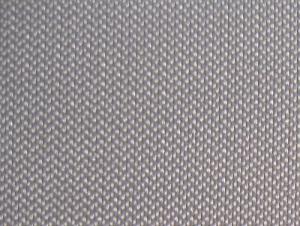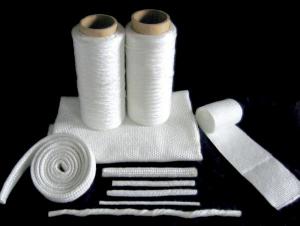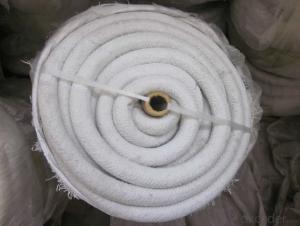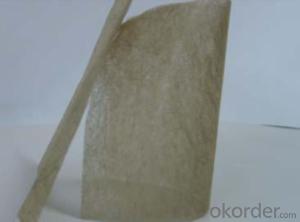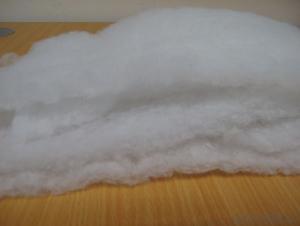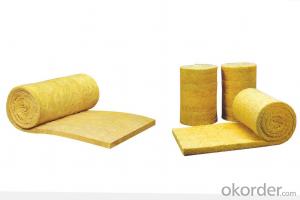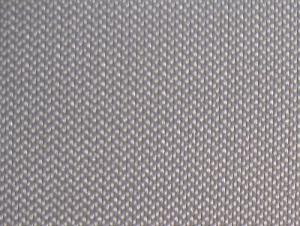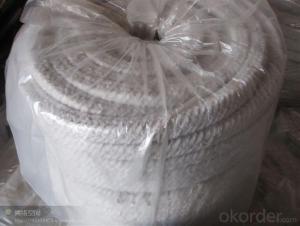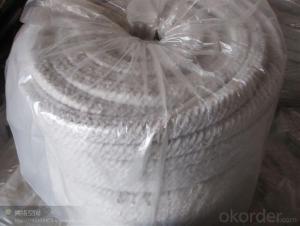Thermal Insulation Ceramic Yarn Product
- Loading Port:
- Qingdao
- Payment Terms:
- TT OR LC
- Min Order Qty:
- 500 m
- Supply Capability:
- 2000 m/month
OKorder Service Pledge
OKorder Financial Service
You Might Also Like
Specifications
1. Ceramic fiber yarn.
2. Classfication Temp:1260C.
3. Low thermal conductivity.
Tech Data:
Colour | White | |||||
Al203+sio2% | >=97 | |||||
Fiber diameter(um) | 2-4 | |||||
Fiber Iength(mm) | 100-200 | |||||
Bulk density(Kg/m3) | 300-700 | |||||
Moisture % | <=1.0 | |||||
Thermal Conductivity(Hot face),w/m.k | 0.12~0.13(300°C) | |||||
Heating liner shringkage(%) | <=3.5(1000°C*3h) | |||||
High-temperature loss on lgnition | 10 | 15 | 20 | 15 | 20 | 25 |
Safe working temp°C | <=1000 | <=450 | ||||
Acid-resistance and alkali-resistance% | 50(10% NaoH After 72 hours) | |||||
Reinforced material | Stainless Steel | Glass filament | ||||
Application:
Ceramic fiber yarn used in producing ceramic fiber tape, ceramic fiber rope, ceramic fiber cloth and fabrics.
Used in high temperature sealing and insulation.
Hitex ceramic fiber yarn is made from alumina silica ceramic fiber, free of asbestos, can be used in different industrial applications under temperatures up to 2300 °F (1260 C) and has excellent chemical stability and strong resistance to thermal shock and corrosion attack. Exceptions are hydrofluoric and phosphoric acids and concentrated alkalis. It also resists oxidation and reduction,
- Q:Can glass fiber textiles be used for medical applications?
- Yes, glass fiber textiles can be used for medical applications. They are widely used in the production of medical equipment such as surgical gowns, drapes, and wound dressings due to their excellent strength, durability, and resistance to chemicals. Additionally, glass fiber textiles can be sterilized easily, making them suitable for use in sterile medical environments.
- Q:What are the different finishes available for glass fiber textiles?
- There are several different finishes available for glass fiber textiles, each with its own unique properties and applications. Some of the most common finishes include: 1. Sizing: Sizing is a finish that is applied to glass fiber textiles to improve their handling and processing characteristics. It helps to reduce the fiber-to-fiber friction, making it easier to handle and weave the textile. Sizing also provides temporary protection against abrasion and mechanical damage during processing. 2. Silane Finish: Silane is a chemical compound that is commonly used as a finish for glass fiber textiles. It helps to improve the adhesion between the glass fibers and the matrix material in composite applications. Silane finishes also enhance the wetting properties of the fibers, allowing for better impregnation of the resin during composite processing. 3. Anti-static Finish: An anti-static finish is applied to glass fiber textiles to reduce or eliminate the buildup of static electricity. This is important in applications where static electricity can cause problems, such as in the manufacturing of electronic components or in cleanrooms. 4. Fire-resistant Finish: Glass fiber textiles can be treated with fire-resistant finishes to improve their resistance to flame and heat. These finishes can provide added safety in applications where fire hazards are present, such as in the construction industry or in protective clothing. 5. Water-repellent Finish: A water-repellent finish can be applied to glass fiber textiles to make them resistant to water absorption. This helps to prevent the textile from becoming heavy and wet, which can affect its performance and durability. 6. UV-resistant Finish: Glass fiber textiles can be treated with UV-resistant finishes to protect them from the damaging effects of sunlight. These finishes help to prevent the degradation of the fibers and extend the lifespan of the textile, making it suitable for outdoor applications. It is important to note that different finishes can be combined to achieve specific performance requirements. For example, a glass fiber textile may have a silane finish for improved adhesion in composite applications, as well as a fire-resistant finish for added safety. The choice of finish will depend on the intended application and the desired properties of the textile.
- Q:Can glass fiber textiles be used in corrosive environments?
- Glass fiber textiles are capable of being used in environments that are corrosive. The resistance to corrosion of glass fibers is excellent against the majority of chemicals, and they do not easily degrade or break down when exposed to substances that cause corrosion. Due to this advantageous quality, glass fiber textiles are suitable for utilization in environments that carry a high risk of corrosion, such as chemical processing plants, wastewater treatment facilities, or coastal areas that are exposed to saltwater. By providing enduring protection against corrosion, glass fiber textiles prove to be a dependable option for applications within corrosive environments.
- Q:Can glass fiber textile be used in wind turbines?
- Yes, glass fiber textiles can be used in wind turbines. They are commonly used as a composite material for the manufacturing of wind turbine blades. Glass fiber textiles provide high strength, durability, and lightweight properties, making them suitable for withstanding the forces and stresses encountered by wind turbine blades while maximizing energy conversion efficiency.
- Q:Can glass fiber textiles be used for making medical implants or prosthetics?
- Glass fiber textiles, also known as fiberglass textiles, have a range of applications in the medical field, including the production of medical implants and prosthetics. The unique properties of glass fiber textiles make them suitable for these purposes. One key advantage of glass fiber textiles is their strength and durability, which allows them to provide excellent structural support. This is particularly beneficial for implants and prosthetics that need to withstand mechanical stress and pressure. In addition to their strength, glass fiber textiles are biocompatible, meaning they do not cause adverse reactions when in contact with biological tissues. They are inert and do not cause inflammation or rejection, making them safe for use in medical implants. Furthermore, the compatibility of glass fibers with the human body can be enhanced by coating them with biocompatible materials. The high surface area of glass fiber textiles allows for effective integration with surrounding tissues, promoting cell adhesion and tissue growth. This is particularly advantageous for implants and prosthetics that require osseointegration, such as bone replacements or dental implants. Moreover, glass fiber textiles can be customized to have specific properties, such as porosity or flexibility, depending on the intended application. For example, they can be used to create porous scaffolds for tissue engineering, which facilitate cell infiltration and vascularization. Overall, glass fiber textiles offer a viable choice for the production of medical implants and prosthetics due to their strength, biocompatibility, and ability to promote tissue integration. However, it is important to consult medical professionals to evaluate the design and application of the implant or prosthetic for individual patients and their specific medical requirements.
- Q:Can glass fiber textiles be used in shoes or footwear?
- Yes, glass fiber textiles can be used in shoes or footwear. They are commonly utilized to reinforce certain areas of the shoe, provide stability, and enhance durability. The glass fibers offer strength and resilience, making them suitable for various applications in footwear manufacturing.
- Q:Can glass fiber textiles be used in high-temperature applications?
- Yes, glass fiber textiles can be used in high-temperature applications. Glass fibers have excellent heat resistance properties and are commonly used in industries such as aerospace, automotive, and insulation where high temperatures are involved. They can withstand temperatures up to 1000°C without losing their structural integrity, making them suitable for various high-temperature applications.
- Q:Can glass fiber textiles be used in wound care products?
- Yes, glass fiber textiles can be used in wound care products. Glass fiber textiles offer several benefits in wound care applications. Firstly, they have a high tensile strength and provide excellent mechanical support to wounds. This helps to keep the wound area stable and reduces the risk of further damage or infection. Additionally, glass fiber textiles have a high absorbency rate, allowing them to effectively manage wound exudate and promote a moist wound healing environment. Moreover, glass fiber textiles have low allergenic potential, making them suitable for individuals with sensitive skin or allergies. They are also non-toxic and do not cause irritation, further enhancing their suitability for wound care products. Furthermore, glass fiber textiles have antimicrobial properties, which help to prevent the growth of bacteria and reduce the risk of infection in wounds. This is especially important in wound care, where infections can significantly delay the healing process. It is worth mentioning that glass fiber textiles are available in various forms, such as woven fabrics, non-woven mats, and knitted fabrics, allowing for versatility in wound care product design and application. They can be used as wound dressings, bandages, or as reinforcement materials in wound closure systems. However, it is important to note that glass fiber textiles should be used under the guidance of healthcare professionals, as they may require specific application techniques and regular monitoring. Additionally, individual patient factors and wound characteristics should be considered when selecting wound care products, including glass fiber textiles, to ensure optimal outcomes.
- Q:Are glass fiber textiles suitable for sports and outdoor gear?
- Glass fiber textiles are well-suited to sports and outdoor gear due to their strength and durability. They are known for their ability to withstand high levels of stress and strain without breaking or tearing, making them an excellent choice for equipment used in sports and outdoor activities. These textiles have a high tensile strength, making them ideal for applications such as sports apparel, backpacks, tents, and other gear that require durability in rough handling and harsh weather conditions. In addition, glass fiber textiles are resistant to UV rays, moisture, and chemicals, making them even more suitable for outdoor use. Furthermore, their lightweight nature makes them favorable for sports gear, where agility and mobility are crucial. Overall, glass fiber textiles possess the necessary qualities required for sports and outdoor gear, making them a suitable choice for such applications.
- Q:How do glass fiber textiles contribute to dimensional stability?
- Glass fiber textiles contribute to dimensional stability due to their inherent properties and manufacturing process. Firstly, glass fiber textiles are made from strands of glass fibers that are spun and woven together. The fibers are known for their high tensile strength and low elasticity, which means that they do not easily stretch or deform under mechanical stress. This property helps to maintain the shape and size of the textile, even under extreme conditions. Secondly, glass fibers have a low coefficient of thermal expansion. This means that they do not expand or contract significantly with changes in temperature. As a result, glass fiber textiles are less prone to dimensional changes caused by thermal variations, such as heating and cooling. Additionally, glass fibers are resistant to moisture and chemicals, which further enhances their dimensional stability. They do not absorb water or react with most chemicals, ensuring that the textile remains unaffected by external factors that could cause swelling or shrinking. Moreover, the manufacturing process of glass fiber textiles involves heat treatment and resin impregnation, which further improve their dimensional stability. The heat treatment helps to set the shape of the textile, while the resin impregnation adds a protective layer that enhances rigidity and prevents deformation. Overall, glass fiber textiles contribute to dimensional stability through their high tensile strength, low elasticity, low coefficient of thermal expansion, resistance to moisture and chemicals, and the manufacturing processes involved. These properties make them an ideal choice for applications where dimensional stability is crucial, such as in the automotive, aerospace, and construction industries.
1. Manufacturer Overview |
|
|---|---|
| Location | |
| Year Established | |
| Annual Output Value | |
| Main Markets | |
| Company Certifications | |
2. Manufacturer Certificates |
|
|---|---|
| a) Certification Name | |
| Range | |
| Reference | |
| Validity Period | |
3. Manufacturer Capability |
|
|---|---|
| a)Trade Capacity | |
| Nearest Port | |
| Export Percentage | |
| No.of Employees in Trade Department | |
| Language Spoken: | |
| b)Factory Information | |
| Factory Size: | |
| No. of Production Lines | |
| Contract Manufacturing | |
| Product Price Range | |
Send your message to us
Thermal Insulation Ceramic Yarn Product
- Loading Port:
- Qingdao
- Payment Terms:
- TT OR LC
- Min Order Qty:
- 500 m
- Supply Capability:
- 2000 m/month
OKorder Service Pledge
OKorder Financial Service
Similar products
New products
Hot products
Related keywords



